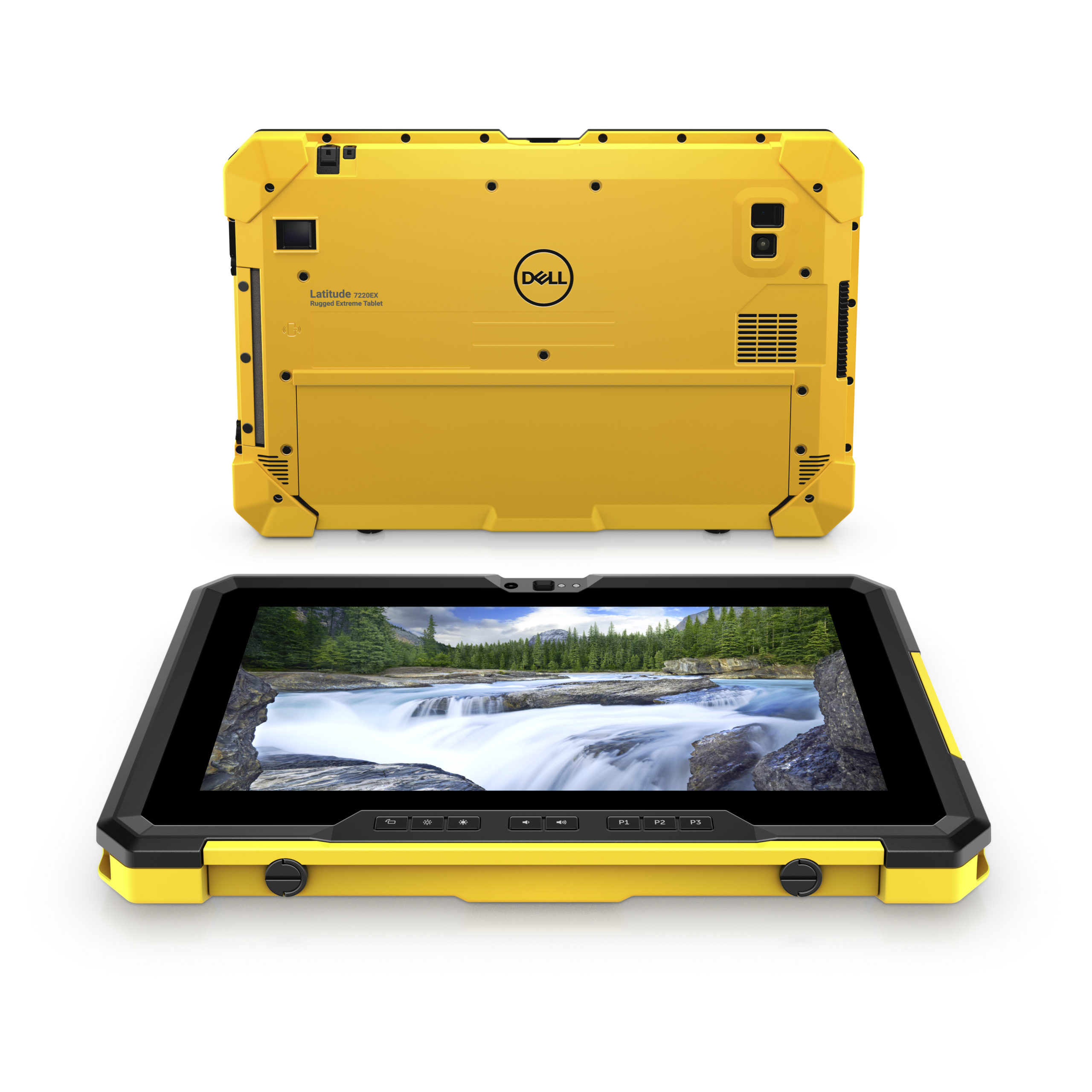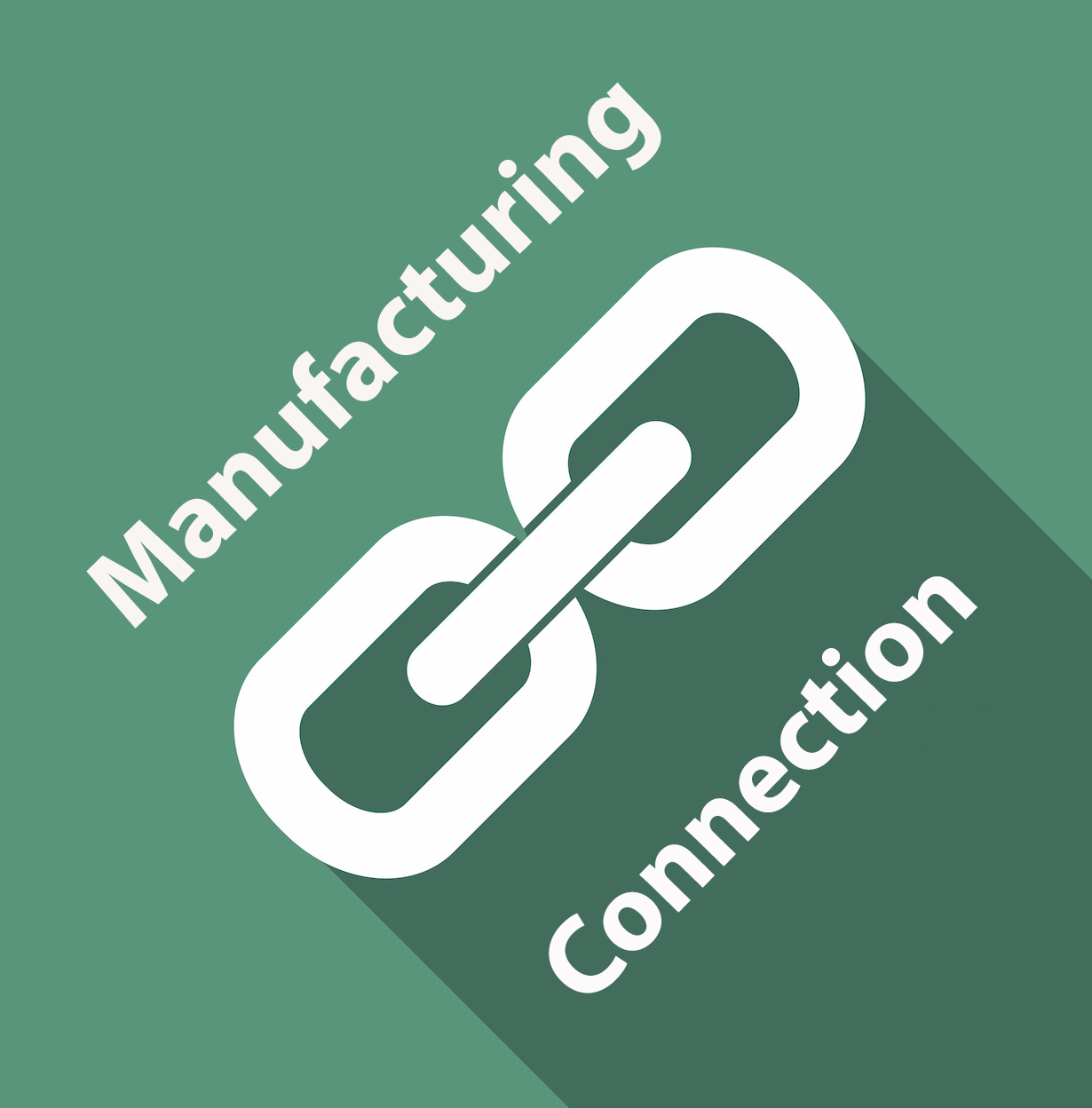by Gary Mintchell | Feb 24, 2020 | Industrial Computers, News
Rockwell Automation announced it has signed an agreement to acquire Italy-based ASEM, S.p.A., a leading provider of digital automation technologies. ASEM provides a complete range of Industrial PCs (IPCs), Human-Machine Interface (HMI) hardware and software, remote access capabilities, and secure Industrial IoT gateway solutions.
Here is the justification from Rockwell’s Communication people: “ASEM’s high-performance automation solutions enable The Connected Enterprise with smarter technology, enhanced productivity, and a more secure environment by integrating smart devices, the control platform, and design and operational software all on a single network.”
My friends in Italy (you can find my column in Italian in Automazione Oggi—Automation Today) tell me that ASEM is indeed a major Italian supplier. It is an interesting pick up. Rockwell acquired an Industrial PC company years ago and proceeded to gut it. I have a feeling that the new regime under Blake Moret has better strategies in mind.
The keyword I pick out centers on IIoT gateway solutions along with the “integrating smart devices…”
I’ve been closely watching the IT companies develop their compute platforms into gateways to serve as the data/information highway from the plant to the enterprise. I know that Rockwell is a target account for their sales groups. In fact, rival ABB has partnered with HPE.
Combine this technology with the close partnership with PTC/ThingWorx and there are many interesting possibilities. How Rockwell handles this acquisition will be indicative of whether Moret has shed the past and is forging a new future—or whether it was just an opportunistic buy to try to gain a European foothold with something to sell.
The transaction includes the purchase of a minority interest in ASEM held by KEB Group, Germany. Post-close, Rockwell Automation will maintain ASEM’s strategic supplier and technology partner relationship with KEB.
The transaction is expected to close in the spring of 2020, subject to customary approvals and conditions, and will be reported in the Architecture & Software business segment.

by Gary Mintchell | Jan 13, 2020 | Automation, Industrial Computers
When Dell developed an Internet of Things (IoT) group, I began following it. The team developed a gateway compute device, brought together various groups within the company, along with many partners. But the market was evidently not large enough to sustain a group. Eventually IoT was moved into the OEM business and the entire team was either laid off or shuffled over to other groups.
Therefore, I found it refreshing that a large IT company not only could spell Class I, Div 2, but develop a product for hazardous areas within petrochemical (and other) plants.

Dell positions its new rugged tablet as an element of digital transformation (of course), but the Latitude 7220EX Rugged Extreme Tablet has ATEX and IECEx certification for use in potentially explosive environments that will give technicians, operators, and engineers a mobile view into operations.
Dell customers in North America and Canada can expect to see Class 1, div 2 certifications on the existing Dell Latitude 7220 Rugged Extreme tablet in the coming months. With these additional ATEX and IECEx certifications which meet EU and International standards respectively, the Latitude 7220EX Rugged Extreme tablet will make it easier for customers to procure and deploy one platform across various regions.
The Latitude 7220EX Rugged Extreme is an 11.6” fully-rugged tablet featuring the brightest-screen in an ATEX-certified tablet, for use in potentially explosive environments. It includes a 1000-nit screen, which increases direct sunlight viewability, and also offers glove-touch capacity. To balance the security of the device with user accessibility, the Latitude 7220EX Rugged Extreme features a built-in infrared camera with “Windows Hello” facial recognition and an optional next-generation fingerprint reader.

by Gary Mintchell | Jun 19, 2019 | Industrial Computers, Internet of Things, Manufacturing IT, Operations Management, Technology
This week is IT week in my study of how IT and OT are coming together. I am in Las Vegas at the annual Hewlett Packard Enterprise (HPE) customer conference called Discover. This rather long post looks at many of the announcements that show how far HPE has come in its expansion into manufacturing.
An interesting point (and you can see some pictures on my Twitter feed @garymintchell) is that there is a manufacturing demo at the entrance into the show area this week. It demonstrates partnerships with PTC (CAD, augmented reality, and IoT), ABB (robotics in this case, more later), along with video and predictive maintenance analytics.
Following are summaries of a number of announcements at this very busy event that have an impact on manufacturing technology and use cases. HPE calls the Edge—meaning basically not in the servers.
Things announced included new edge solutions, research labs, and programs to simplify and accelerate Intelligent Edge adoption, enabling customers to create unique digital experiences and leverage analytics and machine learning to adapt to changes in real-time.
The new offerings and programs include:
- Major enhancements to Aruba Central, the only cloud-based platform that unifies network management, AI-powered analytics, user-centric service assurance and security for wired, wireless and WAN at the edge.
- Integrations and new turnkey edge-to-cloud solutions, delivered with ABB, Microsoft, Rittal, and PTC, enabling real-time intelligence and control in industrial environments.
- The Intelligent Edge and IoT Center of Excellence (CoE) and Labs, part of Hewlett Packard Labs, to develop and commercialize new capabilities and technologies that accelerate customers’ and partners’ Intelligent Edge journey.
Research suggests that over the next decade, the Internet of Things (IoT) and related data growth has an economic potential of up to $11 trillion per year. To capture this potential, organizations need to implement an Intelligent Edge, an architecture that is fully connected, secured, distributed and autonomous. However, to scale the Intelligent Edge across the value chain, organizations need solutions that secure and simplify deployment and management, converge operational technology (OT) with IT and address the lack of skills and funding.
“The edge has emerged as the new center of the digital universe, opening up opportunities for organizations to create new digital experiences and gain competitive advantage,” said Keerti Melkote, founder and president, Aruba, a Hewlett Packard Enterprise company. “Today, we announce innovations that will enable our customers to capitalize on these experiences and opportunities by dramatically simplifying, securing and accelerating the deployment of the Intelligent Edge.”
Unified cloud-based platform
Siloed network management solutions are creating complexity and increasing time to remediation. To accelerate IT operations and allow IT professionals time to focus on innovation, Aruba is making significant enhancements to Aruba Central. With these enhancements, customers will benefit from AI-powered network analytics, improved security and user-centric assurance for wired, wireless and WAN edge infrastructures from a single point of control. Significant advancements include:
Advanced AI-powered analytics and assurance capabilities based on Aruba NetInsight and User Experience Insight allow IT professionals to resolve infrastructure problems quickly before they impact the organization. Now integrated into the Aruba Central cloud-based platform, Aruba’s Analytics and Assurance capabilities deliver IT professionals a way to quickly remediate intermittent network issues while also proactively identifying how to optimize customers’ infrastructures to ensure optimal experiences.
Software-defined branch (SD-Branch) and SD-WAN, managed on Aruba Central, is now enhanced with improved branch management and orchestration capabilities to centrally define business-intent policies to meet the hybrid cloud connectivity needs for distributed enterprises and reduce operational costs. The new SD-WAN Orchestrator in Aruba Central makes it easier for IT professionals to deploy flexible and secure overlay topologies in a large-scale edge infrastructure, connecting thousands of branch locations with multiple data centers. Aruba Virtual Gateways now available for AWS and Azure, combined with orchestration, cost-effectively extends network and security policies to workloads running in the public cloud. The new SaaS prioritization feature not only enhances the performance of SaaS applications but also provides visibility about the end-user experience for business-critical applications, such as Microsoft Office 365 and Salesforce.
Integrated in Aruba Central, Aruba ClearPass Device Insight provides IoT visibility and security via a single pane of glass, employing automated device discovery, and machine learning-based fingerprinting and identification. Used in conjunction with Aruba ClearPass Policy Manager and Aruba’s dynamic segmentation security capabilities, networking and security teams can automate unique policy enforcement down to each device and user.
New network management workflow enhancements are integrated into Aruba Central to accelerate device provisioning with an automated mobile app to deliver network health views and troubleshooting across all locations allowing IT to focus on delivering the needs of the business.
Flexibility in how to obtain and support edge infrastructure
To provide organizations more flexibility and choice in how they obtain and support their edge infrastructure, Aruba solutions are also available via HPE GreenLake for Aruba a Network-as-a-Service (NaaS) subscription-based offering.
Turnkey edge-to-cloud solutions
In industrial environments, the Intelligent Edge requires an intricate interplay between sensors, actuators, networks, applications and infrastructures from edge to cloud. It also involves unique challenges including harsh environmental conditions, intermittent network connectivity and lack of qualified on-site staff. Consequently, such deployments are often costly, slow and vulnerable to security and reliability problems. To simplify, accelerate and secure deployments, HPE is launching pre-integrated turnkey edge-to-cloud solutions in collaboration with key industry partners:
The integration of ABB Ability Smart Sensor technology with Aruba access points is designed to deliver a scalable, high-performance wireless connectivity solution for operational technology (OT) equipment such as motors, mounted bearings and pumps. This allows industrial companies to capture valuable data and insights from their equipment to proactively monitor their condition and performance, and plan maintenance in advance in order to avoid costly and disruptive downtime.
Jointly developed by ABB, HPE, Microsoft and Rittal, the Secure Edge Data Center for Microsoft Azure Stack is the industry’s first enterprise-grade edge appliance for Microsoft Azure Stack, enabling real-time intelligence and action in harsh industrial environments, while providing seamless integration with Microsoft Azure. The appliance provides IP55-rated environmental protection, cooling, redundant power supply and distribution and automated management – allowing customers to run pre-configured, high-end enterprise applications in locations such as factories or oil rigs.
HPE Edgeline IoT Quick Connect dramatically simplifies the convergence of OT and IT, enabling customers to monitor and control OT equipment such as machines or motors in real time. Jointly delivered with Microsoft, HPE Edgeline IoT Quick Connect is based on the HPE Edgeline OT Link Platform, which connects OT devices, the HPE Edgeline EL300 Converged Edge System and Microsoft Azure IoT, a collection of cloud services to connect, monitor and control IoT assets.
Fast Start Condition Monitoring enables customers set up condition monitoring within 90 days to deliver performance and availability of their OT equipment. An end-to-end solution implemented by HPE Pointnext Services, Fast Start Condition Monitoring is designed for customers who want to get started quickly with condition monitoring, but lack the skills to do so. HPE Pointnext Services help define use cases, OT data sources and workflows, and implement pilots for proof of value, based on HPE Edgeline Converged Edge Systems, the HPE Edgeline OT Link Platform and PTC’s ThingWorx Industrial IoT platform.
The newly established Intelligent Edge and IoT CoE & Lab provides critical capabilities and technologies to HPE’s partners and customers to accelerate Intelligent Edge adoption. It will guide partner activities, M&A and research in the following areas:
- Knowledge transfer to HPE’s channel partners to accelerate market adoption of the Intelligent Edge with the Channel to Edge Institute (CEI), a program which helps HPE’s channel partners gain the required expertise to effectively recommend, sell, implement and manage Intelligent Edge solutions for their customers. The CEI provides training on Intelligent Edge use cases and business cases and will deploy joint go-to-market programs with HPE’s channel and ecosystem partners.
- Research programs to drive rapid commercialization of Intelligent Edge technologies that simplify edge-to-cloud management and OT-IT convergence and enable new use cases – this includes, among others, a unified provisioning, policy and security management across wired networks, Wi-Fi and 5G; the next generation of HPE’s first-of-a-kind HPE Edgeline Converged Edge Systems and HPE Edgeline OT Link Platform; and real-time video analytics for quality, security and customer experience applications.

by Gary Mintchell | Jun 14, 2019 | Industrial Computers, Internet of Things, Manufacturing IT, Technology
A mere 2.5-hour drive south on I-75 June 13 brought me to the Schneider Electric plant in Lexington, KY that manufactures load centers and other electrical devices. Schneider Electric marketing people invited me down for tours and festivities marking the unveiling of this brownfield manifestation of Smart Factory using the latest of IIoT, AR, digitalization, and other smart manufacturing principles.
Highlights:
• Schneider Electric Lexington facility is a showcase for sharing IIoT integration strategies with End Users, Machine Builders and Partners
• Lexington plant strategically integrates connected EcoStruxure solutions to enhance efficiency and provide end-to-end operational visibility throughout supply chain operations
• Smart Factory has tracked quantifiable benefits from IIoT implementation, including a 20% reduction in mean time to repair and a 90% paperwork elimination
If this plant is to demonstrate “in real time how its EcoStruxure architecture and related suite of offerings can help increase operational efficiency and reduce costs for its customers”, I asked the natural question—“What is EcoStruxure?”
I’ve heard the term for many years, but being a little slow on the uptake, I’ve never really understood what is meant. So, they set me up with an interview with Vice President Domenic Alcaro. Refreshingly, EcoStruxure is neither a platform or a product. Alcaro told me, “EcoStruxure is a phenomenal way to explain our value structure.” The foundation block consists of connected products (connectivity being a key word). The intermediary block is what they call Edge Control. However, whereas many people look at Edge and think hardware, Schneider Electric considers it basically software. Think the InduSoft HMI product, if you will. Atop the model then are apps and analytics.
Back to the plant:
In operation for more than 60 years and employing nearly 500 people, the Lexington factory is truly a showcase of modern integrated digital experience. Among the benefits realized include empowering operators to gain visibility into operations maintenance, driving a 20% reduction in mean time to repair on critical equipment, and process digitization eliminating paper work by 90%.
“We understand the value of IIoT and the positive business impact that innovation and digitization can have on our operations – particularly in our global supply chain. As a living example of how our EcoStruxure solutions deliver benefits to our customers, we are gaining those same benefits in our operation and sharing that knowledge,” said Mourad Tamoud, Executive Vice President, Global Supply Chain, Schneider Electric. “With our latest Smart Factory showcase, we are able to demonstrate this value in real-time, show the solutions at work and share the tangible benefits that we ourselves are seeing from our own IIoT investment as we accelerate our Tailored Sustainable Connected 4.0 digital transformation.”
As part of the Smart Factory program, Schneider Electric exemplifies brownfield implementation for customers who may be facing the same challenges with their existing production facilities. The team is able to offer strategies and talk through the challenges they faced to help customers exploring IIoT connected technologies overcome those same hurdles toward their modernization goals. By sharing their experience in leveraging EcoStruxure solutions, visiting customers can better understand the value of the brownfield modernization and the resulting operational efficiencies.
In this production environment, these solutions have demonstrated operational and quantifiable value since their implementation:
• EcoStruxure Augmented Operator Advisor – Delivered a 20% reduction in mean time to repair on critical equipment where it has been implemented.
• EcoStruxure Resource Advisor and Power Monitoring Expert – Delivered 3.5% YOY energy savings in the Lexington facility in addition to $6.6 Million in regional savings since 2012; sophisticated reporting capabilities and increased transparency also drive operational performance.
• AVEVA Indusoft Web Studio – Delivered powerful Edge digitization of paper processes to eliminate paper work by 90% and cloud connectivity has enabled digital dashboarding of a critical process.
• RFID OsiSense – Eliminated 128 daily fork truck miles and eliminated $500,000 in Work in Progress (WIP) inventory with a 33% first year ROI.
• AVEVA Insight Data – Unlocked and shared silos of data in a mobile manner reducing downtime in critical processes by 5% with ROI of less than 6 months.
• Magelis GTU/GTUX HMI – Provided agile operator management of the process and vivid visual of the process onsite and via mobile devices.
Among the tidbits of information I picked up on the tour include:
Extensive use of Ethernet and IP networking. Interesting in that the very first conversations I had with a Modicon VP 20 years ago concerned how Ethernet was the network of the future. In 1999 that was revolutionary thinking. Today—it’s the backbone. Hat tip to Mark Fondl.
Great use of data tracking involving RFID tags, MES software, Ethernet connectivity, and visualization that coordinates all the products and containers throughout the company-wide power-and-free conveyor system.
Oh, and a Megelis computer/HMI collecting data from sensors and passing it on uses Node-RED for programming. It’s only the second instance of Node Red I’ve seen in automation.
Finally, Schneider Electric plant management correctly combines digitalization with Lean principles enhancing their daily stand ups and feeding continuous improvement.
Impressive facility. When our politicians and east coast journalists go ripping on American manufacturing, they should be forced to take deep dives into plants like this one.

by Gary Mintchell | Jun 4, 2019 | Industrial Computers, Internet of Things, Manufacturing IT
Check out a couple of interesting computing technology trends currently. On the one hand exist a few companies that exist on a solid business of I/O with a controller who also explore bringing IT technology into the OT world. On the other hand are companies who have developed powerful computing platforms for cloud applications looking for ways to bring that to the edge.
Taiwan-based Advantech builds on a solid I/O lineup with continual experimenting (along with name changes) around computing platforms. It in fact is one of the world’s largest industrial computer suppliers.
It informed the world last week that it has transformed into an “AIoT” provider. A definition of AIoT is not provided. From the context it appears to be a merging of AI (assuming artificial intelligence) and IoT. Note: I’m on vacation so I’m not calling people for interviews right now. Just passing these thoughts along from the Atlantic beach in Virginia.
The press release says that now, Advantech is accelerating AI at the edge with NVIDIA Jetson and aiming to drive the next wave of computing and real-time AI.
Linda Tsai, president of Advantech Industrial IoT Group, said, “Advantech has been in the IoT industry for a long time, and we are fully aware of the demand from edge to cloud. NVIDIA provides an energy-efficient and high-performance AI platform. It is ideal for compute-intensive embedded applications both on the edge and cloud. By closely collaborating with NVIDIA and our software partners, we’re able to develop new AIoT solutions for smart manufacturing and smart city applications.”
Advantech has developed a complete AI product line based on NVIDIA technology from the AI edge to the cloud. On the edge, utilizing the NVIDIA Jetson platform‘s powerful performance, Advantech will provide three AI edge solutions later this year: MIC-710IVA, MIC-720AI, and MIC-730AI for smart city, transportation, and manufacturing applications. These highly integrated systems allow AI application developers to rapidly create unique AI solutions based on Jetson. Advantech “amazed the world at the 2019 NVIDIA GPU Technology Conference (GTC) show in San Jose, USA on March 22 – 26 by launching its cutting-edge AI Network Video Recording (NVR) platform incorporating Advantech’s MIC-710IVA with NVIDIA Jetson Nano.”
For the AI cloud, Advantech’s SKY-6000 series servers with NVIDIA GPUs provide high-density solutions for the big data era. With industrial design capability, Advantech can successfully resolve thermal issues from high-density GPU computing. Also, NVIDIA T4 GPU qualification can ensure Advantech GPU servers have better temperature control and thermal management. This collaboration brings a more reliable server in automated optical inspection (AOI), smart transportation, medical equipment, and smart city applications.
Regarding future cooperation, Linda Tsai added, “Advantech’s partnership with NVIDIA is taking huge steps forward in making AI a reality for manufacturing, transportation, and smart city applications. Through close collaboration in AI product development and shared worldwide marketing programs, Advantech and NVIDIA are driving innovative transformations for AI applications.”

by Gary Mintchell | Apr 9, 2019 | Automation, Industrial Computers, Security
I booked a vacation several months ago that conflicted with Hannover Messe. I missed the usually chilly and damp north of Germany in favor of the definitely chilly and damp Pacific Northwest.
Many announcements from Hannover reached me anyway, though, so I’ll be going through a few this week. First up concerns using the new CIP Security protocol from ODVA. This one from Rockwell Automation.
This release talks about Rockwell’s developing solutions toward closing a cybersecurity opening within industrial automation communication.
“As the world’s leading company focused on combining industrial automation with digital technology, we’re uniquely positioned to help close security gaps in connected operations,” said Megan Samford, director of product security, Rockwell Automation. “Our new offerings with built-in security deliver the industry’s best available protection of control-level traffic. This can give users confidence that the integrity of their systems and their device-to-device communications are protected from day one.”
The Allen-Bradley ControlLogix EtherNet/IP communication module is among the first industrial devices to use the CIP Security protocol from ODVA. The protocol helps make sure only authorized devices are connected in industrial operations. It also helps prevent tampering or interference with communications between those devices. CIP Security is the first industrial automation protocol to support transport layer security (TLS), the most proven security standard available.
Also, the newly enhanced Allen-Bradley ControlLogix 5580 controller is the world’s first controller to be certified compliant with today’s most robust control system security standard, IEC 62443-4-2. The standard defines the technical security requirements for industrial automation and control system components. This certification builds on the 2018 certification of the Rockwell Automation Security Development Lifecycle (SDL) to the IEC 62443-4-1 standard.








